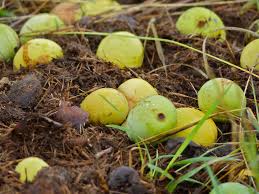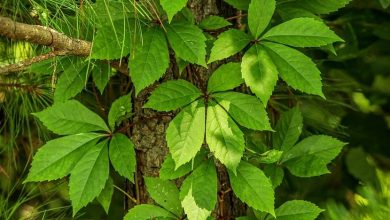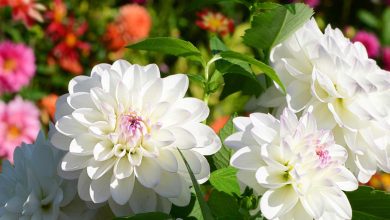Marula Tree: [Planting, Care, Harvest, Irrigation and Characteristics]

 The marula tree, native to Africa, is a species that stands out for its evergreen leaves and a fruit that has been widely used in cosmetology.
The marula tree, native to Africa, is a species that stands out for its evergreen leaves and a fruit that has been widely used in cosmetology.
This fruit can also be consumed because it has a pleasant sweet taste.
In general, it is not very high, and can reach up to 10 meters, or even 20, when the environmental conditions are suitable.
The marula tree cannot be kept in isolation, as it needs both female and male specimens to successfully achieve its flowering process.
Do you want to know a little more about this exotic specimen? Join us
- Scientific name: Sclerocarya birrea .
- When? In summer .
- Where? In full sunlight.
- How do we prepare the land? It needs good drainage, so it could be prepared with added peat or sand.
- How should we water? By dripping .
- How often do you have to water? Every day in the germination phase and every 2 or 3 days when it is growing.
- What pests and diseases does it have? In general, none.
Marula characteristics
 It is a single-stemmed tree with a broad, horizontally extending crown.
It is a single-stemmed tree with a broad, horizontally extending crown.
It is characterized by a mottled gray bark. The tree grows up to 18 m tall, especially at low altitudes and in open forests.
The distribution of this species in Africa and Madagascar has followed the Bantu in their migrations. There is some evidence of human domestication of tree is marula, since trees found in farmland tend to have larger fruit.
The fruits, which ripen between December and March, have a light yellow skin (exocarp), with white pulp (mesocarp). They fall to the ground when they are immature and are green in color, and then mature to a yellow color on the ground.
The fruits are drupes with a single seed enclosed within its endocarp, although up to four seeds may be present. They are succulent and tart with a strong and distinctive flavor. Inside is a thick-walled, walnut-sized bone (endocarp).
These stones, when dry, expose the seeds by detaching 2 (sometimes 3) small circular plugs at one end. The seeds have a delicate nutty flavor and are highly sought after, especially by small rodents that know how to gnaw exactly where the plugs are.
Trees are dioecious, which means there are male and female trees. Male trees produce multiple male flowers in a cluster. These have red sepals and petals, and about 20 stamens per flower. On rare occasions a male flower can produce a gynoecium, making it bisexual.
Female flowers grow individually on their own pedicel and have stamina.
Sclerocarya birrea (marula) is divided into three subspecies: birrea subspecies, caffra subspecies and multifoliolata subspecies.
These subspecies are differentiated by changes in the shape and size of the leaves. They also grow in different areas of Africa. The birrea subspecies is found in North Africa, the caffra subspecies is found in southern Africa, and the multifoliolata subspecies is only found in Tanzania.
The leaves are alternate, compound and divided. Leaf shapes range from round to elliptical.
When to plant a marula tree?
 Being from Africa, the marula stands out among its germination needs at high ambient temperatures.
Being from Africa, the marula stands out among its germination needs at high ambient temperatures.
This condition makes it an ideal species to sow in summer , when the thermometer is in full swing.
Where to plant a marula?
Marula needs to be planted in full sun . Being a species from the African savannah, it is used to these conditions.
Another important detail is that the terrain must be flat, since it does not survive above 2000 meters above sea level.
How to prepare the land?
The land needs to be firm but with a good capacity for drainage , since it is a species that needs a lot of humidity but no puddles.
A good way to add this condition, if you don’t have it, is by mixing the soil with a substrate such as sand or peat.
On the other hand, the pH accepted by the species leans towards the acid , with a level between 5 and 7 being acceptable.
One last important point is that it is a deep soil , since the roots of the tree tend to expand a lot.
How do we water the marula?
 We recommend drip irrigation . The water is better used and also, the land around the tree does not puddle.
We recommend drip irrigation . The water is better used and also, the land around the tree does not puddle.
How often do we water?
Humidity is a first-rate requirement for marula. The needs will be classified in two stages.
The first is germination where the amount of water to be provided will have to be abundant.
The second is at the time of development and growth where the needs will decrease a little, until reaching a medium range.
In this second stage, an inter-day or capillarity irrigation system could be applied.
How to sow a marula step by step?
- Open the shell of the seed. This is quite hard and if this process is not carried out it is very likely that you will not be able to germinate it. In fact, to open it you will need the support of a tool, such as a small saw that allows access to the interior.
- Extract the kernel of the seed that you will find inside the shell. This part is what you will use to sow. It is an area of very fine brown skin that must be taken care not to mistreat when the outer bark is opening.
- Check the seed and verify which is the thinnest side it has because this will be the one you will use to sow. However, before proceeding with this step it is necessary that the seed be soaked for a period of between 12 and 24 hours to soften the exterior.
- Open a small hole in a germinator and insert the seed.
- Water with plenty of water and repeat the operation daily. It is important to note that although it needs high temperatures to thrive, it also needs moisture because, if it does not have it, it will not be able to germinate.
- Wait about 2 weeks to begin to notice changes in the structure of the seed. In fact, it is one of the species that manages to advance in this process more quickly.
- When it has already given its first plant and is in suitable conditions for transplantation (which measures around 30 centimeters), carry out the process to the final place, taking care not to abuse its structure too much.
- After burying, water abundantly so that the soil compacts and continues with this process every 2 days.
If the area where the seedling is to be planted suffers from constant winds, it will be necessary to establish a protective barrier until it is strong enough to support itself.
What care does the marula tree need?
At the beginning, when it is in the germination phase, marula is demanding with high temperatures.
However, after having passed this process , it is quite adaptable accepting a range that covers from 10 to 30º C.
It is also important to make sure that it is not subjected to frost because it cannot bear them.
In fact, it is a species that is thought for tropical climates where the 4 seasons are not present, but only the dry season and the rainy season.
Uses of the marula fruit
Traditional uses
 The fruit is traditionally used as food in Africa and has considerable socio-economic importance.
The fruit is traditionally used as food in Africa and has considerable socio-economic importance.
The juice and pulp of the fruit are mixed with water and stored in a container for 1 to 3 days of fermentation to make marula beer, a traditional alcoholic beverage. The distilled alcoholic beverage (maroela-mampú) made from the fruit is mentioned in the stories of the South African writer Herman Charles Bosman .
Marula oil is used topically to hydrate the skin, and as an edible oil in the diet of the San people in southern Africa.
Commercial uses
At the industrial level, the fruit of the marula tree is collected in the wild by members of rural communities on whose lands the trees grow. This harvest and sale of the fruit only occurs for two or three months, but it is an important income for the rural poor population.
This can be an important source of income for poor rural women. The fruit is delivered to processing plants where the fruit pulp, pips, kernels, and pip oil are extracted and stored for processing throughout the year.
The fruit is used to make Amarula cream liqueur and is also sold as a frozen puree used in juice mixes. Marula oil is used as an ingredient in cosmetics.
Food for other species
It has been suggested that the marula fruit is the preferred food of the ancestral form of the forest-dwelling fruit fly , Drosophila melanogaster, which was much more selective as to which fruit they preferred, as opposed to flies that they have self-domesticated to live close to humans.
Ancestral fruit flies are triggered by the marula ester ethyl isovalerate in marula fruit.
The marula fruit is also consumed by various animals in southern Africa.
In Jamie Uys’ documentary Animals Are Beautiful People , released in 1974, scenes show elephants, ostriches, warthogs and baboons getting poisoned by eating the fermented marula fruit.
While the fruit is commonly consumed by elephants, the animals would need a large amount of fermented marulas to have any effect on them, and other animals prefer the ripe fruit.
The amount of water the elephants drink each day would also dilute the effect of the fruit to such an extent that they would not be affected by it.
Giraffes, rhinos, and elephants, all of them curious about the marula tree, with elephants in particular being a huge consumer. Elephants eat the bark, branches and fruits of the marula, which can limit the spread of trees.
Damaged bark from browsing can be used to identify marula trees as elephants target them preferentially. Elephants distribute marula seeds in their manure .
What pests and diseases affect you?
The marula is one of the most resistant species in the world that exists because its origin is given in African savannas where human attention is minimal.
This tells us that as long as it remains with conditions very similar to those of its place of origin, it is possible that it will be able to grow and develop without problems.
It is important to note that one of the problems that could occur is that the plant does not bear fruit and this could be the result of the soil not draining well.
Therefore, the selection and primary preparation of the field is essential to achieve the best results.
Although it is a little-known species in Spain, the marula fruit is consumed in abundance in the areas of Africa where it is present. This is because it has a pleasant taste, but it is also rich in vitamin C.


![Photo of Jade Plant: [Cultivation, Irrigation, Associations, Pests and Diseases]](https://www.complete-gardening.com/wp-content/uploads/2022/08/jade-plant-cultivation-irrigation-associations-pests-and-diseases-390x220.jpg)
![Photo of Fern Care: [Soil, Humidity, Pruning and Problems]](https://www.complete-gardening.com/wp-content/uploads/2022/08/fern-care-soil-humidity-pruning-and-problems-390x220.jpg)
